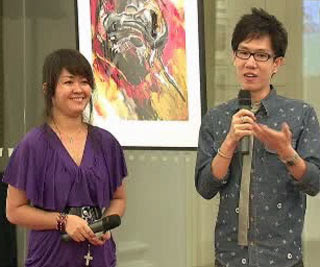via Khmer NZ
29.08.2010
Peter Brimble, Asian Development Bank senior country economist for Cambodia, said the main rationale for the railway upgrade, partly funded by the ADB, was to develop a more cost-effective freight system. “The logistics cost of carrying agricultural produce is critical and if you don’t have an effective way of doing it then it’s difficult to get the product out. I think the idea behind this is that it’s one option that’s relatively cost-effective".
Toll Royal Railway is planning to spend up to US$81 million to import new trains as part of the multi-million-dollar railway upgrade of the Kingdom’s major freight routes, according to the Ministry of Public Works and Transportation.
“The company has already set a plan to buy 11 engine carriages, 500 freight carriages and some other train materials for their operation by the end of this year or next,” the ministry’s Secretary of State Touch Chankosal said yesterday.
He said that Toll Royal Railway was preparing the paperwork to apply to the Council for Development of Cambodia requesting permission to import the locomotives; however, he said he could not confirm where the trains would be purchased from.
He said that refurbishment of Cambodia’s existing trains would continue, but that the expectation was that they would not suffice.
“In fact, we still have many carriage heads and carriages which can be mended, but they do not completely run well, so we need to import the new ones,” he said.
Peter Brimble, Asian Development Bank senior country economist for Cambodia, said the main rationale for the railway upgrade, partly funded by the ADB, was to develop a more cost-effective freight system.
“The logistics cost of carrying agricultural produce is critical and if you don’t have an effective way of doing it then it’s difficult to get the product out. I think the idea behind this is that it’s one option that’s relatively cost-effective,” he said.
Touch Chankosal said it was also the first step to ease the amount of heavy transportation damaging roads.
The ADB and AusAID are providing $141 million in funding for Toll to upgrade the 254-kilometre line from Phnom Penh to Sihanoukville town, a 388-kilometre line from Phnom Penh to Poipet and a 48-kilometre line from Poipet to Sisophon.
Brimble said there were no plans for the ADB to fund future railroad projects in the Kingdom, but that he understood a “spur” would be added to the rail line in Sihanoukville to link it to the nearby port.
Toll Chief Executive David Kerr declined to comment, and ADB senior transport economist Peter Broch said he could not confirm the figures provided by the ministry.
Toll is jointly owned 55 percent by Australia’s largest trucking and freight company, Toll Holdings, and 45 percent by Kit Meng’s Royal Group. The duo teamed up last year to secure a 30-year concession to operate the network.
Toll Holdings reported a full-year net profit yesterday of A$278.9 million (US$247 million) for the 12 months ending June.
Its shares rose 2.7 percent to A$5.99 at close of trading in Sydney yesterday.






















